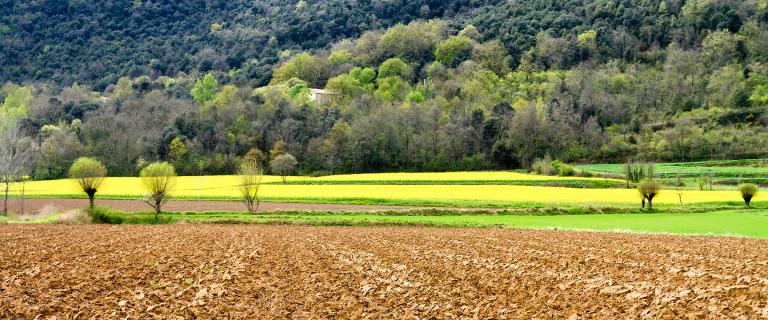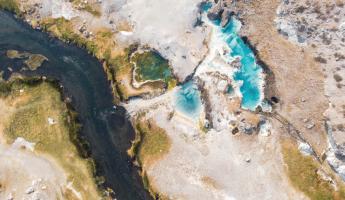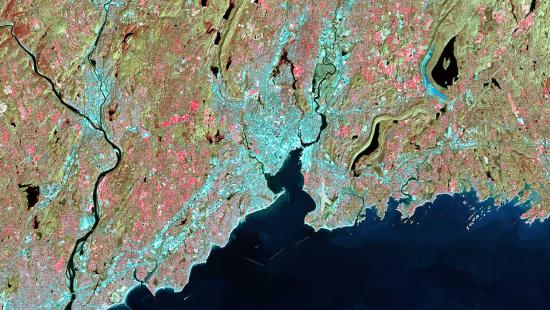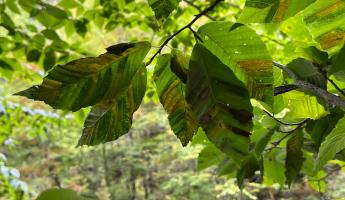Reducing fossil fuel emissions entering the atmosphere is critical to mitigating global warming, but it is not enough to combat climate change. The atmosphere already contains billions of tons of carbon dioxide that has been accumulating since the industrial age, and we continue to emit tens of billions of tons per year. To reduce global warming and avoid the most devastating and widespread impacts of climate change, gigatons of carbon dioxide must be removed from the atmosphere.
Yale scientists are exploring climate solutions that accelerate natural processes that remove and store carbon dioxide from the atmosphere, including enhanced mineral weathering (EMW) and ocean alkalinity enhancement (OAE). This effort is one of the flagship initiatives of the Yale Center for Natural Carbon Capture (YCNCC), a university-wide effort within Yale’s Planetary Solutions Project.
Currently, though, there is no comprehensive computational model for assessing the potential of these innovative pathways to carbon dioxide removal. A new study led by Yale School of the Environment Professor of Ecosystem Ecology Peter Raymond will create a modeling framework that connects rainfall, soils, rivers, coastal oceans, and open oceans to fully evaluate the impact of EMW and OAE on atmospheric carbon dioxide concentrations, ecosystems, and ocean pH.
The study is part of the Department of Energy’s Energy Earthshot Initiative that supports research in carbon dioxide removal and clean energy technologies. This year, the initiative provided $264 million in funding for 29 projects. The Yale team, in partnership with scientists from three universities, is working on an aspect of the “Carbon Negative Shot” from DOE, which issued an all-hands-on-deck call for innovative research in carbon removal technologies.
The new study led by Raymond, which received $5 million in funding, will be conducted by scientists who have been working together through the YCNCC, and are from YSE, Yale’s Department of Earth and Planetary Sciences (EPS), as well as scientists from the Georgia Institute of Technology, Princeton University, and Texas A&M University. The research team from Yale includes James Saiers, Clifton R. Musser Professor of Hydrology in YSE, and three faculty from EPS, Professor Noah Planavsky, Associate Professor Matt Eisaman, and Assistant Professor Juan Lora. Annalis Bracco, Christopher Reinhard and Takamitsu Ito of Georgia Institute of Technology, John Higgins and Laure Resplandy of Princeton University, and Shuang Zhang of Texas A&M University will also be collaborating on the study.
Centers & Programs
Finding solutions to climate change through advances in natural carbon sequestration.
YSE’s Liza Comita, co-director of the YCNCC along with Professor David Bercovici from EPS, says the Earthshot research is vital to climate change mitigation efforts.
“It is exciting to see our scientists’ success in leveraging the support provided by YCNCC and to gain additional funding for critical research on enhanced weathering and ocean alkalinity enhancement. Both of these are natural climate solutions that have tremendous carbon capture potential, along with likely co-benefits for agriculture and marine life, but they require additional research before they can be implemented at large scales,” says Comita, who is professor of tropical forest ecology at YSE.
YSE News spoke with Raymond about the new research and the promise of natural carbon capture.
Q. Several climate models, including those produced by the United Nations Intergovernmental Panel on Climate Change (IPCC), show that reducing the amount of CO2 entering the atmosphere from the industrial, power, and transportation sectors alone will not be enough to combat climate change. How does enhanced rock weather and ocean alkalinity work to remove carbon dioxide?
Weathering happens when rainwater and snowmelt interact with rocks and soil and dissolve minerals, converting the carbon dioxide to bicarbonate, which sequesters or removes the carbon dioxide from the atmosphere. In oceans, adding alkalinity removes carbon dioxide from the atmosphere through a series of reactions that convert dissolved CO2 into bicarbonate and carbonate molecules.
Q. Your team has been working on some field projects using enhanced rock weathering. What have you found so far?
James Saiers, Noah Planavsky, and I have been working with a larger collaborative group on field trials worldwide. We are particularly excited about a project in Vermont where, this summer, we spread 440 tons of crushed basalt over a large portion of the pasture and hayfield within an agricultural watershed. Although this watershed-scale experiment is in its very early phases, the initial results are encouraging, and we are optimistic this could become a ‘sentinel site’ that is a cornerstone in our understanding of enhanced weathering. We have already detected basalt weathering products in watershed drainage waters, signaling enhanced rock weathering-induced CO2 consumption. Hay yields have also increased, suggesting that crushed basalt is exerting a fertilizing effect — a co-benefit to the CO2 removal. The findings from our EMW field trial will help inform our Earthshot research by providing measurements that are critical to parameterizing our models to predict rates of CO2 removal.
Newsletter
Biweekly, we highlight three news and research stories about the work we’re doing at Yale School of the Environment.
Q. How does this study build on Yale’s current research in this field?
Enhanced mineral weathering and ocean alkalinity enhancement is all pretty new. This study will integrate soil, river, and ocean models at regional to global scales and provide great insight into how to optimize the efficacy of these technologies. The proposed framework would link across spatial scales from soil profiles and river networks to coastal oceans and ultimately large ocean basins. If we are going to scale these two technologies, we need models that can determine the efficacy and impacts at the global scale.
Q. What are the challenges to these natural carbon capture methods?
There are lots of processes that can impact the rate of atmospheric carbon dioxide removal and the stability of its storage. Rates of removal are currently difficult to assess. Furthermore, carbon dioxide that is removed on land or the ocean can be leaked back to the atmosphere through a series of interactions. Thus, we need to be able to model both CO2 capture and CO2 leakage as waters move from soils to rivers and ultimately the ocean. Additionally, if we are adding minerals on land to accelerate weathering, and it is going into the ocean, and adding alkaline substances to the ocean, what are the total impacts on the ocean and how do we determine that?
Q. In what ways is this research integral to climate change mitigation efforts?
Natural carbon capture is emerging out of necessity because we have not been able to decrease emissions on the scale that we need to reduce the impacts of global warming. We desperately need to decrease emissions from fossil fuel burning, but we also need to understand how to accelerate carbon dioxide removal with these techniques on a gigaton scale. The combined impact of global alkalinization through EMW and OAE could be to offset a significant percentage of current fossil fuel emissions, while neutralizing past ocean acidification.






